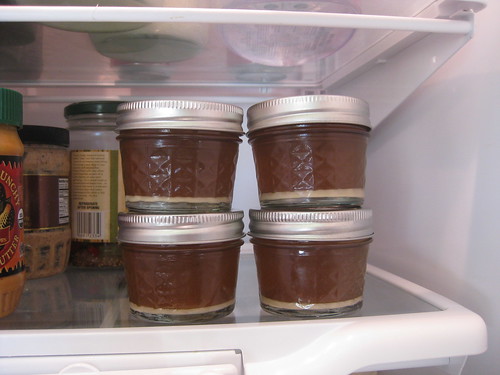Bru
Well-Known Member
I have a yeast cake which has been sitting in the primary for a few days - the beer has racked off it. Its been sealed and kept sanitary - how long can I wait before washing the yeast ?


I have a yeast cake which has been sitting in the primary for a few days - the beer has racked off it. Its been sealed and kept sanitary - how long can I wait before washing the yeast ?
Great - thanks. I ended up washing it and it looks and smells fine.

Is there an optimum time period for a starter ? I have read 2-3 days are the best ..is a lesser time a violation ?
I was wondering this this weekend...I had planned to try to make a starter on Thursday night so I cld brew Sat or Sunday. Of course, I forgot to make the starter.
I guess it doesn't matter this weekend, since I took a direct hit at a birthday party last night, so no brewing anyway today for me...still in recovery mode..(but they all loved my beer)
Anyway, is there any plm with making a starter one day and brewing 24 hours later ? I should know by then if the yeast are viable, at least.
Is there an optimum time period for a starter ? I have read 2-3 days are the best ..is a lesser time a violation ?
I was wondering this this weekend...I had planned to try to make a starter on Thursday night so I cld brew Sat or Sunday. Of course, I forgot to make the starter.
I guess it doesn't matter this weekend, since I took a direct hit at a birthday party last night, so no brewing anyway today for me...still in recovery mode..(but they all loved my beer)
Anyway, is there any plm with making a starter one day and brewing 24 hours later ? I should know by then if the yeast are viable, at least.



similar question to mikeysab--This was my first attempt at yeast washing. It may be hard to see in the attached picture, but I think I failed in not disturbing the trub too much. You can see a lot of gunk at the bottom and a thin yeast layer--these were supposed to be my "final" jars. Can / should I sanitize some more jars in iodophor (while I brew today, it would be fairly easy) and then decant again? The jar on the far left looks better than the others--the rest have a distinct dark layer at the bottom and a thin layer of lighter color above that. Or should I just let it be? thanks for any advice!


So I tried this for the first time last week, and ... holy crap it was easy. So easy. Unbelievably easy. If you're reading this thread and haven't tried yeast washing yet because it looks difficult and complicated ... just do it.
But my question is: since these jars are pretty small, is the yeast in one of them enough for a regular-sized starter? Or should I combine the yeast into 2 jars? I'm honestly not interested in having to start with a smaller starter, then step it up (at least for a normal OG beer), since, well, that's more work than I wanna do. If that's the case, I'd rather just combine them.
Were you doing it in a 2000ml beaker? Something else? Any airlock or porous stopper?
I just washed some WLP300 yeast from a Hefeweizen fermentation pale. I just harvested 3 1/2 pint jars worth.
I'm listening to Brew Strong yeast washing webcast http://s125483039.onlinehome.us/archive/bs_yeastwash081009.mp3 while I'm posting this.
They don't really recommend washing hefe yeasts as they go south quickly.
Have others had good results using washed hefe yeasts and how long was your yeast stored prior to being used?
Thanks
Enter your email address to join: